Reflecting on 40 years of gem-buying at the Arizona shows.
This year marked the 40th anniversary of the first time I visited the Tucson Gem & Mineral show in 1983. At the time, I was working for a Canadian geologist who traded mineral specimens. He’d opened an upmarket mineral and jewelry store in Banff, Alberta, and recruited me to be the jeweler. We went to the Tucson show to see what that side of the gem trade looked like. I was blown away and hooked.
Tucson was a really shabby town back then, literally faded by the desert sun. The show suited the town; it seemed to have organically occupied every possible nook and cranny of the low-slung buildings. I had never seen a show like it, before or since. The rambling lack of formality was how the show began, back in the ’60s. Because of the large plots of uninhabited scrubland, there was nothing to prevent the show from growing to become a vast tented journey, following the I-10 Highway.
The American Gem Trade Association (AGTA) show also celebrated its 40th anniversary this year. That surprised me a bit, to think we both started our Tucson history in the same year; we should have had a joint ruby party together. AGTA GemFair and the Gem & Jewelry Exchange (GJX), the two more formalized sections of the show — and to a certain extent, the Pueblo Inn Motel as well — are the main areas where more serious gems can be found. As one sojourns through the aircraft hangar-size tents, the offerings become more and more random: rugs, Buddhist paraphernalia, dinosaurs, beads, beads and more beads. There are even kitchen sinks.
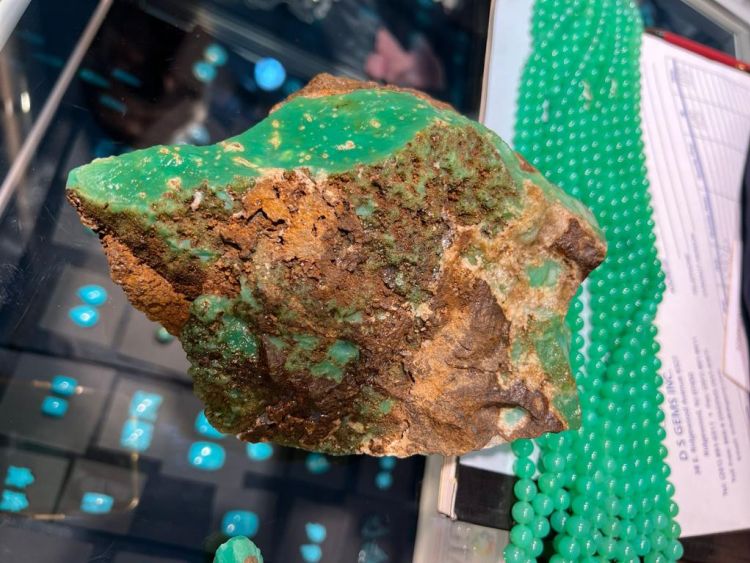
Roughing it
In addition to buying cut gemstones, my main mission every year is to buy rough material that we cut to fit our designs. I have been buying that way ever since I developed my Crystal Haze signature technique 28 years ago. Rough material can be found throughout the fairs, but I tend to find most of what I’m looking for at the Kino sports ground show, located about 5 miles up the I-10 from the more central shows. Here, I deal with the actual miners. This is a community far removed from the more brilliantine finished gem dealers of the more structured shows. Someone even had a couple of goats tethered up outside their tent this year, probably to make the place feel more like home. Hardcore is the exact term for this end of the business. I usually end up taking a few industry people with me who have never shopped gems by the kilo. And I always hire a truck, for added theater.
This year, I bought 46 kilos of falcon’s eye — a natural blue tiger’s eye from South Africa — and 25 kilos of silver sheen obsidian from Mexico. However, by far my best star find was chrysolemon, a chrysoprase from central Australia. I first bought this opaque, minty-green material about 16 years ago from two young guys in an upstairs bedroom of the Pueblo Inn Motel. This was the closest transaction to a drug deal I have ever participated in (with no intention of getting high). The material in such clean form is exceptionally rare and a perfect color for use in our latest Crystal Haze collection.
Back to the cut-gem vendors of the more structured show: This year, I bought some of the beautiful new intense-green demantoid from Madagascar. I feel this gem will be an instant hit with consumers. I was also very impressed to hear about the amount of work and engagement these miners have been able to offer the local communities. On the note of community, there were more women miners present at the show this year than I had ever seen before. I had some really engaging conversations with women miners from Kenya and Madagascar.
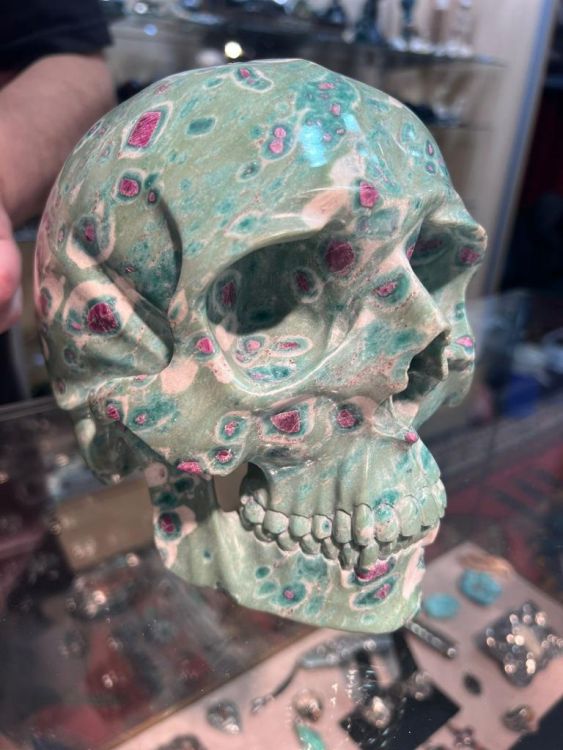
Grey, brown, and around the town
I have to be a little cautious when I rant about an unsung gemstone. Six or seven years ago, I started championing grey stones, specifically grey spinel. I knew of no one else who was using this unlikely colored material, or even anyone who had thought about using it. Within two to three years of me getting behind it, spinel became one of the hottest things in the jewelry world. Consequently, the price went up between 50% and 400%. Whoops.
Anyway, this year, I bought some amazing golden-brown material: some African tourmaline, some Malaya garnet and some Cambodian zircon, quite possibly the world’s most misunderstood gem. This is because the natural gem is often confused with the man-made cubic zirconia, to which there is no connection.
I met with many, many old and new friends. When you have been in an industry for 46 years and a veteran of the show itself, it’s hard to take a single step without bumping into another familiar face. If only I could remember their names, it would be a lot less awkward.
Fortunately, Tucson has many good restaurants these days, with an abundance of good Mexican and southwestern menus. My favorites are Penca and Charro, both in downtown.
I always stay at Starr Pass, mainly because the property sits up in the amazing cactus-covered hills. I sometimes get up before dawn, strap on a head-light torch, and walk the trails until dawn — the best way ever to set one up for the exhausting process of a week’s gem buying in the lower Arizona desert.
Stephen Webster is a leading British jeweler, celebrated for fearless designs and responsibly sourced materials.
Main image: Stephen Webster at the Tucson show. (Stephen Webster)

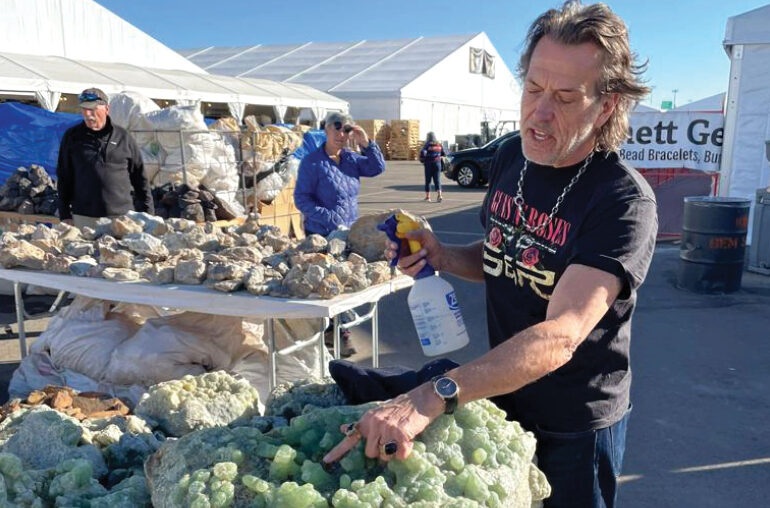
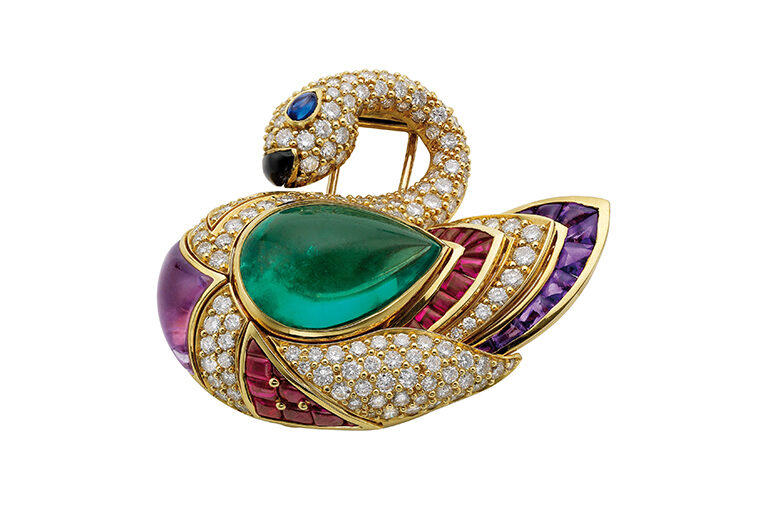
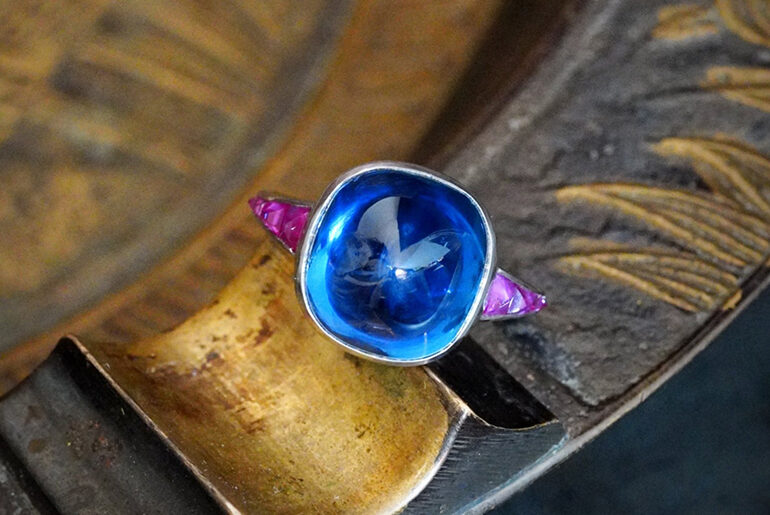
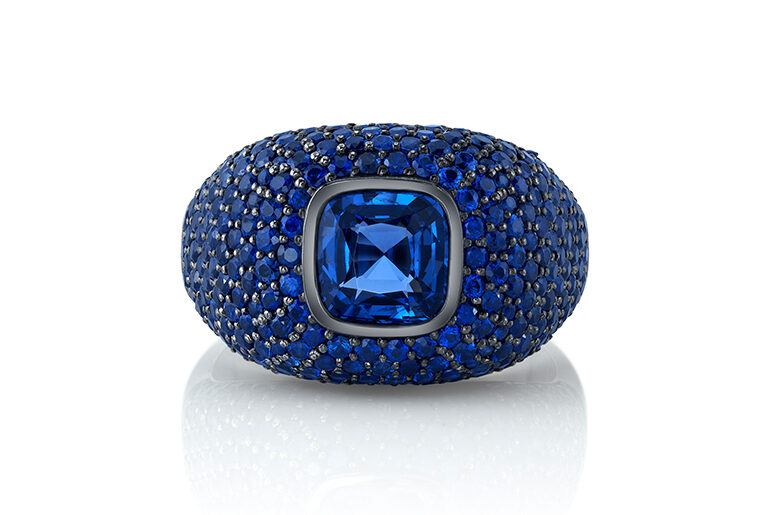
Comments are closed.